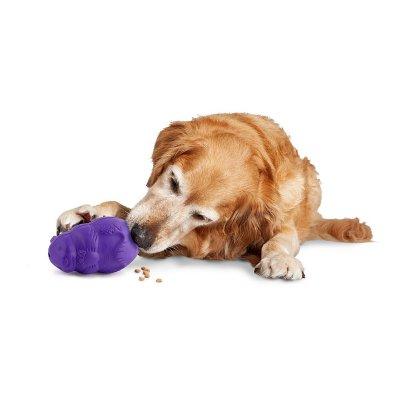Dr. Patrick Mahaney, VMD
As our pets age, they become more likely to suffer from joint pain. Common adult and geriatric disease conditions include arthritis, which is painful joint inflammation, and degenerative joint disease, a progression of chronic arthritis that makes it difficult for your pet to move. There are so many choices to manage that pain, including anti-inflammatory drugs and supplements. How do you decide which is best for your pet? I’ll start with how to understand the differences between pet pain management options and then describe the variety of options available to you. 
Anti-Inflammatory and Numbing Drugs In managing these and other discomforting ailments, non-steroidal anti-inflammatory drugs (NSAIDs) are often prescribed to reduce your pet’s pain. By interrupting the inflammatory cascade, you ultimately let your dog or cat be more comfortable and lead a pain-free lifestyle. Unfortunately NSAIDs have potential for mild to severe side effects, depending on the patient, including digestive upset (vomit, diarrhea, decreased appetite, etc.), kidney and liver failure, blood clotting abnormalities, or even seizures.
Besides NSAIDs, medications that numb pain (opioids, GABA-analogues, etc.) can be used instead of NSAIDs, especially for pets having abnormally functioning kidneys, liver, platelets, or digestive tract. Medications like Tramadol (opoid) and Gabapentin (GABA-analogue), however, also have side effects, including mild to moderate sedation, ataxia (difficulty walking), constipation, and behavior changes.
Glucosamine So what can you do to reduce your pet’s reliance on medications with undesirable side effects? The good news is that there are a variety of options available to safely promote a safer and more comfortable quality of life for pets. Multi-modal pain management is the strategy of using nutraceuticals (food derived substance having medicinal benefits), lifestyle modification, and other techniques to lessen your pet’s needs for pain-relieving and anti-inflammatory drugs.
Nutraceuticals have fewer side effects and address the underlying cause of joint pain. A standard chondroprotetant (joint nutraceutical) ingredient is glucosamine. The structural components of cartilage are made from proteoglycans, with glucosamine being one of the most common proteoglycans. Shellfish are the most conventional source of glucosamine used in oral joint supplements, but algae (a vegetarian source) and bovine (cow) tracheal cartilage (such as in Novartis Adequan injections) are other options. Other ingredients with glucosamine nutraceuticals include Chondroitin Sulfate, Methyl Sulfonyl Methane (MSM), hyaluronic acid, decaffeinated green tea, anti-oxidants, vitamins, and minerals. These may be included in the powder, tablet, or liquid chondroprotectants. Unlike NSAIDs or other pain medication, it typically takes between four to six weeks of consistent dosing with a glucosamine supplement to see positive effects. Some dogs show a positive response more quickly, yet it’s important to maintain regular administration of a chondroprotectant on a long term basis.
Omega Fatty Acids For an extra boost of natural anti-inflammatory, I recommend my patients take a daily dose of omega fatty acids. As both dogs and cats are meat eaters, animal-based omega fatty acids fulfill their requirements more efficiently than plant sources, which is why fish oil is my preferred omega fatty acid source. Three types of omega fatty acids (3, 6, and 9) are contained in fish oil. Omega 3 and 9 fatty acids are anti-inflammatory, while Omega 6 is pro-inflammatory. Omega 6 fatty acids are still needed to promote healthy membranes surrounding nervous tissue, so do not eliminate them from your pet’s diet.
When providing an omega fatty acid supplement for your pet, focus on the omega 3s. Aside from your pet’s joints, the blood vessels, heart, skin, coat, nerves, and other body systems can safely benefit from omega fatty acid supplementation. When reading a fish oil label, look for the total milligrams (mg) of EPA (Eicosapentaenoic acid) and DHA (Docosahexaenoic acid), which are common forms of omega 3 fatty acids. EPA is considered to be most important in reducing inflammation, while DHA is an important structural component of the brain and retina (light receiving portion of the eye). Use the recommended dose of total Omega 3s as per your veterinarian. For my own canine companion and my patients, I recommend Nordic Naturals Omega 3 Pet, yet many suitable options are available through veterinarians, pharmacies, and pet stores. Choose a fish oil that appears clear, has minimal fishy odor and flavor, and is guaranteed to be free of heavy metals.
Extra Pain Relief Additional means of promoting pain relief in dogs and cats include:
- Acupuncture
- Massage
- Physical therapy
- Hydrotherapy, where a pet swims or walks on an underwater treadmill
- Weight loss and weight management
- Modifying your home with ramps, runner rugs on slippery floors, and nail covers
- Booties
- Supportive harness




